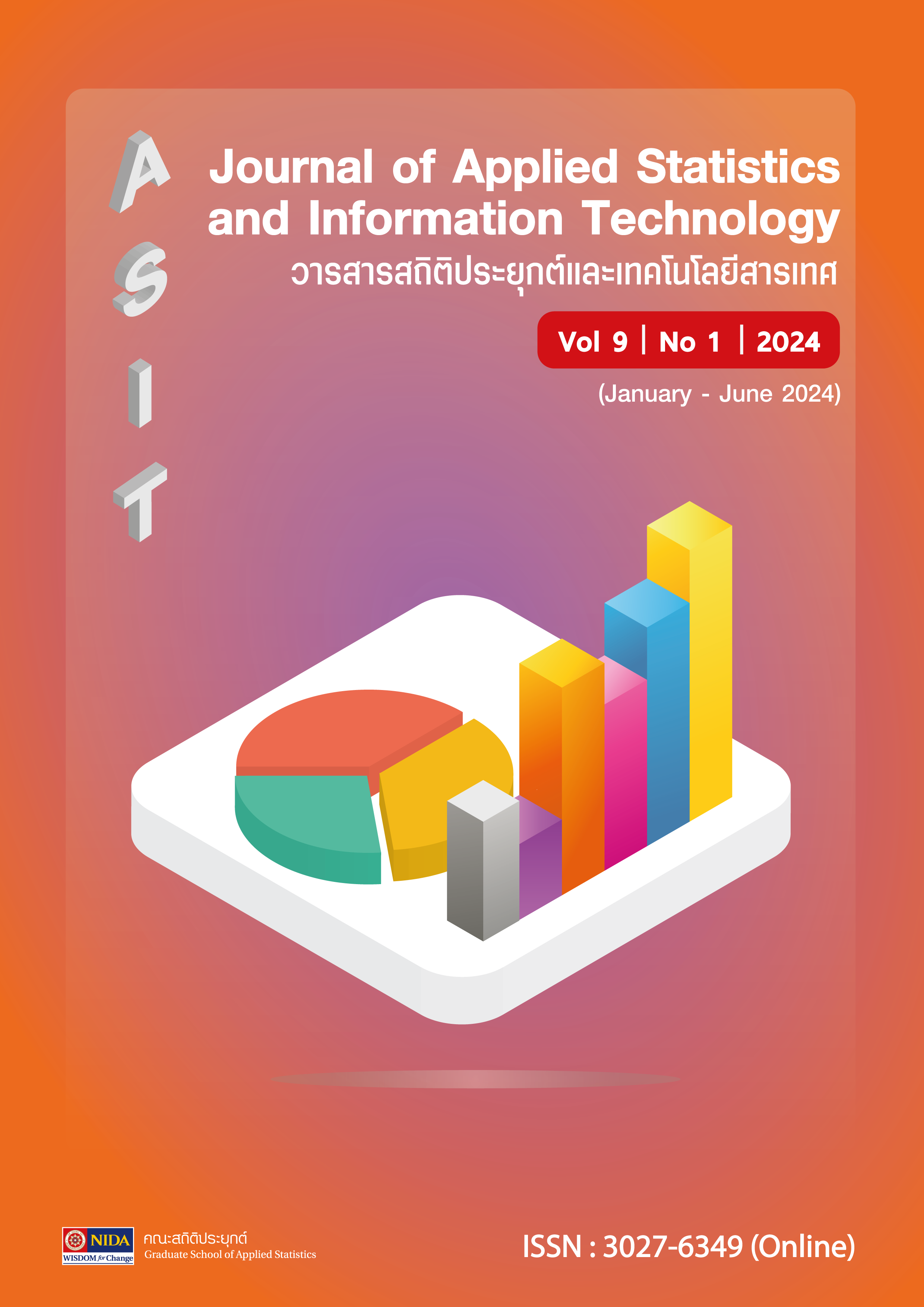Quality Control Using Statistical Methods to Reduce Costs in Ceramics Industry Factory
Keywords:
Quality Control, Statistical Methods, Ceramics IndustryAbstract
This research the objective is to find methods for quality control in the ceramics industry production process using an action research model. From the study problems were found in the production process. Broken and defective ceramic products occur at a high rate. Increasing production costs. The research therefore aims to study quality control methods in the production process of ceramic products. Based on the principles of quality control using statistical methods. To correct and improve the production process Reduce the amount of waste or defects. Tools used to collect data Including production data record inspection sheet and waste generated in the production process. Analyze data to determine the importance of problems with Pareto charts and use fishbone diagrams to analyze the cause of the problem. Create an improvement plan, experiment with using P-type control charts to control the rate of waste that occurs. The research results found that problems that occur within a factory are caused by factors such as people, machines, raw materials, methods, and the working environment. That causes various errors and is the cause of waste within the production process. Before improving the process, waste data that occurred in the production process was found in the amount of 3,928 pieces, accounting for 10.33 percent, with a process efficiency value of 90. When statistical quality control methods are used to improve processes it was found that waste from production was reduced to 1,910 pieces, accounting for 5.03 percent the process efficiency value was 95. From the results of improvement using statistical quality control principles. It shows that the ability of the process to produce work has increased and the waste rate from the production process has actually decreased.
References
กิตติศักดิ์ พลอยพานิชเจริญ. (2553). การวิเคราะห์ระบบการวัด (MSA) ประมวลผลด้วย MINITAB 15. กรุงเทพฯ : สมาคมส่งเสริมเทคโนโลยี (ไทย-ญี่ปุ่น).
กระทรวงอุตสาหกรรม. (2566). แผนปฏิบัติการด้านการพัฒนาอุตสาหกรรมจังหวัดลำปางระยะ 5 ปี (พ.ศ. 2566 - 2570). ค้นเมื่อ 16 มิถุนายน 2566 จาก: file:///C:/Users/Admin/Downloads/Documents/9369e3adcb 99c04032ca9e21bb175d2c.pdf.
เธียรไชย จิตต์แจ้ง. (2530). การบริหารการผลิต. กรุงเทพมหานคร: มหาวิทยาลัยสุโขทัยธรรมาธิราช.
เปรื่อง กิจรัตน์ภร. (2543). การจัดองค์การอุตสาหกรรมและการผลิต. กรุงเทพมหานคร : คณะเทคโนโลยีอุตสาหกรรม สถาบันราชภัฏพระนคร. มหาวิทยาลัยราชภัฏธนบุรี.
ปวีณา นิ่งนาน. (2553). แนวทางการลดของเสียในกระบวนการขึ้นรูปชิ้นงาน กรณีศึกษา : โรงงานผลิตโคมไฟฟ้า. วิทยานิพนธ์อุตสาหกรรมศาสตรมหาบัณฑิต ภาควิชาการจัดการอุตสาหกรรม มหาวิทยาลัยเทคโนโลยีพระจอมเกล้าพระนครเหนือ.
วิชัย แหวนเพชร. (2543). มนุษยสัมพันธ์ในการบริหารอุตสาหกรรม.กรุงเทพมหานคร: โรงพิมพ์ธรรมกมล.
ศุภชัย นาทะพันธ์. (2551). การควบคุมคุณภาพ. กรุงเทพฯ: ซีเอ็ดยูเคชั่น.
สายชล สินสมบูรณ์ทอง. (2554). การควบคุมคุณภาพเชิงสถิติและวิศวกรรม. กรุงเทพฯ: จามจุรีโปรดักท์.
สุภาพ แก้วมณี. (2552). การลดของเสียในกระบวนการผลิตพาเลทไม้ กรณีศึกษา บริษัท เอกอุดรเทรดดิ้ง จำกัด. วิทยานิพนธ์อุตสาหกรรมศาสตรมหาบัณฑิต ภาควิชาการจัดการอุตสาหกรรรม มหาวิทยาลัยเทคโนโลยีพระจอมเกล้าพระนครเหนือ.
Deming, W.E. (1950). Elementary Principles of the Statistical Control of Quality. JUSE.
Juran, J. M., and Gryna, F. M. (1993). Quality planning and analysis : From product Development Through use. (3d ed). New York : Mc Graw-Hill.
Oakland, John, S. (1999). Total Organizational Excellence Achieving World – Class Performance. Linacre House : Jordan Hill.
Downloads
Published
How to Cite
Issue
Section
License
Copyright (c) 2024 Journal of Applied Statistics and Information Technology

This work is licensed under a Creative Commons Attribution-NonCommercial-NoDerivatives 4.0 International License.
เนื้อหาและข้อมูลที่ปรากฏในบทความที่ตีพิมพ์ในวารสารสถิติประยุกต์และเทคโนโลยีสารสนเทศถือเป็นความคิดเห็นส่วนบุคคลของผู้เขียนแต่ละท่าน ความผิดพลาดของข้อความและผลที่อาจเกิดจากนำข้อความเหล่านั้นไปใช้ผู้เขียนบทความจะเป็นผู้รับผิดชอบแต่เพียงผู้เดียว บทความ ข้อมูล เนื้อหา รูปภาพ ฯลฯ ที่ได้รับการตีพิมพ์ในวารสารถือเป็นลิขสิทธิ์ของวารสาร หากบุคคลหรือหน่วยงานใดต้องการนำทั้งหมดหรือส่วนหนึ่งส่วนใดไปเผยแพร่ต่อหรือเพื่อกระทำการใดๆ จะต้องได้รับอนุญาตเป็นลายลักอักษรณ์จากวารสาร ก่อนเท่านั้น



